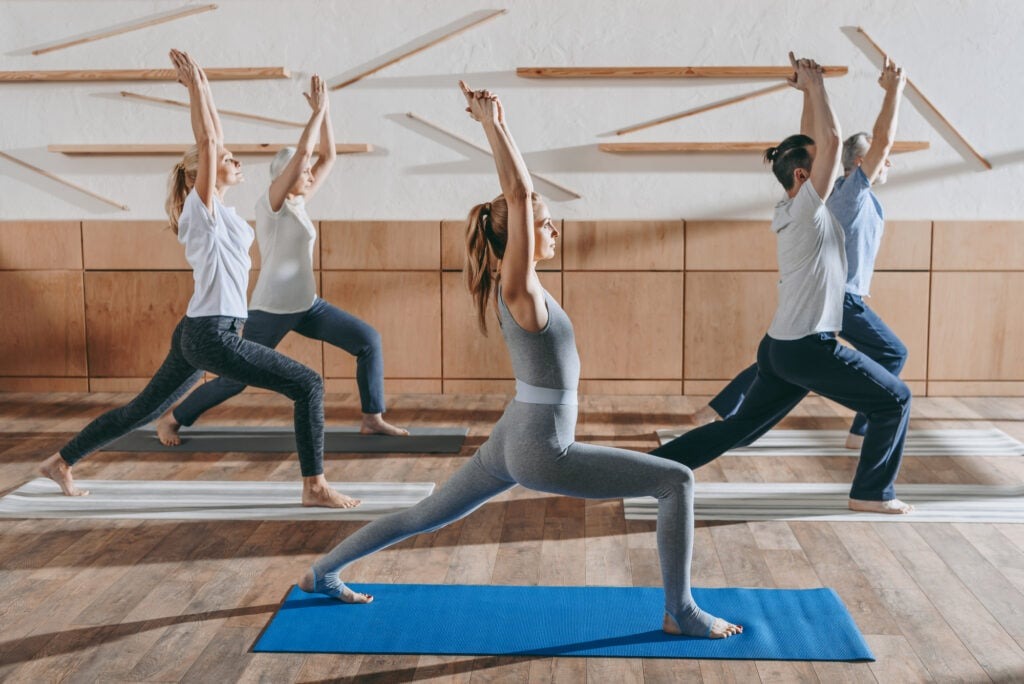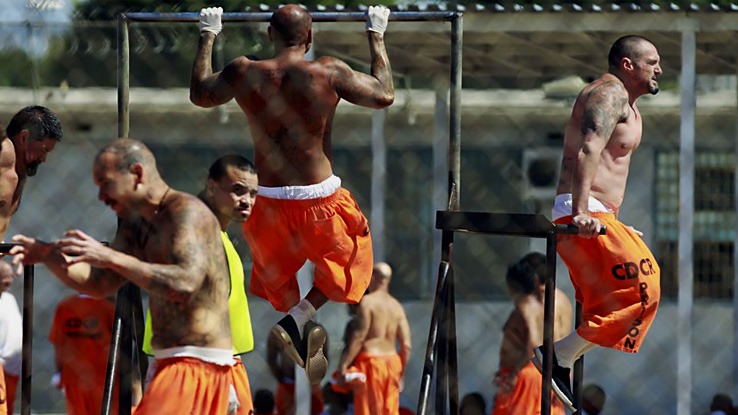
Martial Arts Meets Yoga: A Hybrid Fitness Philosophy.
Martial arts and yoga, two ancient Eastern practices, converge to create a hybrid fitness philosophy that balances strength, flexibility, and mindfulness. By combining the discipline and power of martial arts with the calm, restorative qualities of yoga, this fusion cultivates physical resilience, mental clarity, emotional balance, and spiritual awareness, offering a holistic approach to total human development in modern life.
💪 Fitness Guru
60 min read · 10, Oct 2025

Introduction: The Convergence of Two Ancient Paths
Martial arts and yoga may appear to belong to vastly different worlds — one rooted in combat, the other in peace. Yet, both share an astonishingly similar philosophical foundation. Each discipline was designed to train not just the body, but also the mind and spirit. Martial arts, originating from diverse regions like China, Japan, Korea, and India, emphasizes discipline, defense, and controlled power. Yoga, with its Indian origins, emphasizes mindfulness, balance, and the union of body and mind through breath and posture.
In the modern era, where holistic fitness philosophies are gaining prominence, the merging of martial arts and yoga has given rise to a groundbreaking approach — “Martial Arts Yoga” or “Martial Yoga.” This hybrid discipline emphasizes functional strength, mindfulness in movement, flexibility, and inner calm, serving both physical and psychological wellness. It bridges the aggression of martial training with the tranquility of yoga, creating a balanced system of total human optimization.
Shared Philosophies: Discipline, Breath, and Mindfulness
At the heart of both martial arts and yoga lies a shared belief in discipline, balance, and breath control.
- Discipline and Self-Mastery:
- Both practices demand consistent effort and patience. A martial artist learns to master reactions under pressure, while a yogi learns to master thoughts and emotions through stillness. In both, the ultimate opponent is not another person but the self — the undisciplined mind.
- Breath as Power:
- In yoga, pranayama (breath control) channels life energy, or prana, to enhance concentration and vitality. Similarly, in martial arts, controlled breathing techniques — like the kiai in karate — increase strength, focus, and endurance. Breath becomes both weapon and medicine.
- Mindfulness in Motion:
- Every strike or kick in martial arts mirrors the mindful flow of yoga poses. Each requires precision, awareness, and complete presence. The practitioner learns to move with intention rather than impulse — transforming every motion into meditation.
This philosophical overlap makes the union of martial arts and yoga not only natural but profoundly synergistic.
The Physical Fusion: Strength Meets Flexibility
Modern fitness enthusiasts often fall into two camps — those focused on strength and conditioning, and those seeking flexibility and mental peace. But martial arts and yoga bridge that divide perfectly.
- Balance of Strength and Mobility:
- Martial arts builds explosive strength, speed, and coordination. Yoga enhances flexibility, balance, and body control. Together, they create a body that’s powerful yet fluid — capable of both force and grace. A practitioner of this hybrid discipline can generate immense physical power while remaining supple and injury-resistant.
- Joint Health and Injury Prevention:
- Martial artists are prone to joint and ligament injuries from repetitive high-impact motions. Yoga counters this by elongating muscles, improving range of motion, and enhancing joint lubrication. The result is improved recovery and longevity in training.
- Core Stability and Posture:
- Yoga’s focus on alignment strengthens the deep core muscles that support martial stances and kicks. Movements like the Warrior Pose (Virabhadrasana) mirror martial postures such as the front stance in karate — both emphasizing groundedness and stability.
Thus, the hybrid system cultivates functional fitness — strength with softness, endurance with elasticity.
Mental Benefits: The Warrior’s Calm
Martial arts often teach how to control chaos; yoga teaches how to find calm within chaos. The psychological synthesis of these two disciplines is immensely powerful.
- Stress Reduction:
- Martial arts training releases pent-up energy and aggression, while yoga reduces cortisol and promotes relaxation. This dual mechanism combats modern stress effectively, leaving the practitioner both energized and serene.
- Focus and Flow:
- Martial arts demand instantaneous decision-making. Yoga trains sustained focus. Together, they cultivate flow state — the heightened awareness where thought and action merge seamlessly.
- Emotional Regulation:
- Through mindful movement and controlled breathing, practitioners learn to observe emotions rather than react impulsively. This is especially useful in real-life confrontations, where staying composed can be life-saving.
- Confidence and Inner Peace:
- Martial arts instill confidence and assertiveness; yoga nurtures empathy and humility. The blend results in balanced self-esteem — confidence without arrogance, strength with compassion.
The mind of a “martial yogi” is calm but alert, humble yet powerful — a warrior in peace.
Spiritual Dimensions: The Inner Journey
Both martial arts and yoga are deeply spiritual paths. They encourage introspection, self-awareness, and connection with something greater than the self.
In ancient Chinese and Japanese martial traditions, the warrior’s path — Bushido — was a moral and spiritual code emphasizing honor, respect, and selflessness. Similarly, yoga’s Eight Limbs of Patanjali outline ethical principles, meditation, and enlightenment.
The spiritual synthesis of these traditions creates a path where physical mastery leads to self-realization. The practitioner learns that every punch and pose is a step toward inner truth. The goal shifts from defeating opponents to overcoming ego, fear, and ignorance.
This hybrid practice becomes not merely exercise, but a philosophy of conscious living — an art of harmonizing energy, emotion, and intention.
Modern Applications and Training Systems
The integration of martial arts and yoga has gained momentum globally. Trainers and fitness enthusiasts are developing hybrid programs that combine elements of both traditions for comprehensive wellness.
- “Martial Yoga” Workouts:
- These sessions start with yoga warm-ups to improve mobility, followed by martial arts drills emphasizing balance and coordination, and end with meditative yoga cooldowns to relax the nervous system.
- Mixed Movement Practices:
- Instructors integrate tai chi (a slow martial art) with hatha or vinyasa yoga for fluid, meditative sequences that enhance energy flow (qi or prana).
- Combat Yoga for Self-Defense:
- Some systems blend yoga poses with self-defense techniques to teach non-aggressive response under pressure — turning yoga into a method of protection as well as peace.
- Rehabilitation and Therapy:
- Martial yoga is now being used for rehabilitation of athletes and veterans, combining physical therapy with mindfulness to heal trauma and restore body-mind harmony.
In essence, this hybrid is evolving from a trend into a sustainable, evidence-based wellness system that fits modern lifestyles.
Scientific Insights: The Body-Mind Connection
Research supports the benefits of both yoga and martial arts independently — from reducing anxiety to improving balance, flexibility, and brain health. When combined, these effects are magnified.
- Neuroscientific Benefits: Regular practice enhances neuroplasticity, coordination between hemispheres, and executive brain function. The controlled breathing of yoga and the dynamic focus of martial arts improve reaction time and emotional regulation.
- Cardiovascular Health: Martial drills provide high-intensity interval training (HIIT), while yoga improves circulation and lowers blood pressure — an ideal blend for heart health.
- Endocrine and Nervous System Balance: Yoga’s calming parasympathetic activation complements the martial art’s sympathetic (fight-or-flight) activation, training the body to move between action and rest efficiently.
The result: a resilient, adaptive, and self-regulated nervous system — the foundation of both physical and mental fitness.
Cultural Harmony: East Meets East
What makes this hybrid philosophy even more fascinating is its cultural synergy. Both martial arts and yoga originated in the East and share deep spiritual roots.
- From India, yoga spread with the idea of inner peace and balance.
- From China and Japan, martial arts evolved with the idea of discipline and honor.
When they meet, they don’t clash — they complete each other. The meditative stillness of yoga tempers the fiery energy of martial arts, and the structured movement of martial arts adds direction to yoga’s serenity.
Together, they symbolize harmony between Yin and Yang, power and peace — a lesson the modern world urgently needs.
Practical Integration for Individuals
Anyone can begin integrating martial arts and yoga, regardless of age or fitness level. Here’s a simple structure for beginners:
- Warm-Up with Yoga (10–15 mins):
- Gentle stretches, sun salutations, and deep breathing to prepare muscles and mind.
- Martial Drills (20–30 mins):
- Basic punches, kicks, stance work, or shadow sparring to build strength and coordination.
- Cool Down with Restorative Yoga (10–15 mins):
- Slow stretches, guided meditation, and breathwork to release tension and integrate movement.
Over time, practitioners can develop their unique rhythm — balancing intensity with stillness, aggression with awareness.
Challenges in the Fusion
While the fusion is promising, it also poses challenges:
- Cultural Authenticity: Respecting both traditions without diluting their philosophies is vital.
- Instructor Qualification: Trainers must have expertise in both disciplines to guide safe and meaningful practice.
- Personalization: The balance between strength and relaxation varies for each individual — customization is key.
Nevertheless, when approached mindfully, this hybrid becomes a profound practice for personal evolution.
Martial arts and yoga, though seemingly divergent disciplines, converge beautifully to create a transformative hybrid fitness philosophy that addresses the body, mind, and spirit simultaneously, offering a holistic approach to health, self-awareness, and resilience. Martial arts, rooted in diverse traditions such as karate, kung fu, taekwondo, and judo, emphasize discipline, strength, agility, coordination, and self-defense, training practitioners to respond to challenges with precision and control, while yoga, with its Indian origins and practices spanning Hatha, Vinyasa, and Ashtanga, focuses on flexibility, balance, breath control, and meditative awareness, encouraging the practitioner to cultivate inner calm, mindful presence, and holistic well-being. When these two worlds intersect, they form a system in which explosive power is tempered by fluidity, aggressive movements are softened by mindful posture, and high-intensity physical activity is balanced with restorative practices that promote recovery and longevity. The philosophy behind this integration rests on shared principles: discipline, breath, and mindfulness. Discipline in both martial arts and yoga requires regular practice, patience, and the cultivation of self-mastery, teaching that the greatest challenge is not an external opponent but internal resistance, fear, and ego, while controlled breathing, exemplified by pranayama in yoga and the kiai in martial arts, channels energy, enhances focus, and improves both mental clarity and physical endurance. Furthermore, mindfulness in motion unites these disciplines, as every strike, kick, or stance in martial arts mirrors the awareness and precision cultivated through yoga postures, fostering a heightened connection between mind and body, where each movement becomes a meditative act rather than a mere physical gesture. Physically, this hybrid practice addresses the common limitations of traditional fitness regimens by blending the explosive strength, cardiovascular conditioning, and agility of martial arts with the flexibility, balance, and postural alignment inherent in yoga, creating a body that is simultaneously resilient and fluid, powerful yet supple, capable of withstanding impact while maintaining graceful motion. Joint and ligament health, often compromised in martial arts due to repetitive high-impact movements, is enhanced through yoga’s elongating stretches and controlled mobility exercises, reducing injury risk and improving recovery times, while core strength and stability, critical for martial stances, kicks, and grappling techniques, are reinforced by yoga’s emphasis on alignment and deep abdominal engagement, as seen in poses like Warrior, Plank, and Boat. Beyond the physical benefits, the mental and emotional advantages of combining martial arts and yoga are profound, with martial arts providing an outlet for aggression and energy release, while yoga cultivates relaxation, stress reduction, and parasympathetic nervous system activation, resulting in a practitioner who is simultaneously alert, composed, and emotionally balanced. Focus and flow are enhanced, as martial arts develop rapid decision-making and situational awareness, while yoga strengthens sustained attention and concentration, producing a state of heightened presence where mind and body operate in harmony, and the practitioner can navigate both life challenges and physical engagements with clarity and poise. This hybrid practice also fosters emotional intelligence, resilience, and confidence, merging the assertiveness and courage of martial arts with the humility, compassion, and self-awareness nurtured by yoga, yielding individuals who can confront adversity without fear, maintain composure under pressure, and act with deliberate intention rather than reactive impulse. On a deeper, spiritual level, the combination reflects the wisdom of Eastern philosophies, drawing parallels between the moral and ethical codes of martial traditions, such as Bushido in Japan or Shaolin principles in China, and the spiritual guidelines of yoga, such as the Eight Limbs of Patanjali, where ethical conduct, self-discipline, meditation, and mindfulness lead to self-realization, revealing that true mastery extends beyond technique to the cultivation of character, inner peace, and harmonious living. Modern applications of this fusion are increasingly visible, with instructors developing structured “Martial Yoga” programs that incorporate yoga-based warm-ups to enhance mobility, martial arts drills for functional strength and agility, and yoga-based cooldowns for recovery and mental integration, while therapies and rehabilitation programs utilize martial yoga to restore physical function, manage stress, and heal trauma, demonstrating its versatility for both fitness enthusiasts and therapeutic contexts. Scientific studies support the synergistic benefits of this approach, showing improvements in cardiovascular health, neuroplasticity, emotional regulation, balance, coordination, and stress resilience, as the alternating intensity of martial drills and restorative yoga optimally engages the sympathetic and parasympathetic nervous systems, training the body to respond adaptively to both action and relaxation. Practically, beginners can integrate this hybrid philosophy by starting with gentle yoga sequences to warm up, followed by basic martial techniques, stances, or shadow sparring, and concluding with restorative stretches, meditation, or breathwork, gradually increasing intensity while maintaining mindfulness, awareness, and alignment. Cultural harmony further enriches this practice, as both martial arts and yoga emerge from Eastern traditions emphasizing balance, energy flow, and moral development, with the meeting of aggressive yet disciplined martial movement and serene, meditative yoga creating a holistic, balanced system reminiscent of Yin and Yang — power and peace coexisting in dynamic equilibrium. Challenges include maintaining cultural authenticity, ensuring instructor competency, and personalizing the practice to individual needs and abilities, but when approached mindfully, this hybrid philosophy becomes not merely exercise but a comprehensive lifestyle, enhancing physical fitness, mental clarity, emotional stability, and spiritual awareness. Ultimately, the convergence of martial arts and yoga embodies the principle that strength without awareness is incomplete, and mindfulness without strength is ungrounded, demonstrating that the integration of these ancient disciplines can produce individuals who are strong yet flexible, assertive yet calm, and grounded yet spiritually aware, offering a fitness philosophy that addresses the complexities of modern life while honoring the wisdom of ancient practices, making it a powerful tool for total human development, resilience, and holistic well-being in a world that increasingly demands both action and reflection, intensity and calm, strength and serenity.
Martial arts and yoga, while often perceived as entirely distinct disciplines, converge to form a remarkably holistic hybrid fitness philosophy that simultaneously develops the body, mind, and spirit, creating a unique approach to physical conditioning, mental clarity, and emotional balance, as martial arts, with traditions spanning karate, kung fu, taekwondo, judo, and Brazilian jiu-jitsu, focus on discipline, strength, agility, coordination, and practical self-defense skills, training the practitioner to respond with precision under pressure, while yoga, originating in ancient India with practices like Hatha, Vinyasa, and Ashtanga, emphasizes flexibility, balance, breath control, meditation, and mindful awareness, promoting harmony between body and mind and encouraging the cultivation of inner calm, self-reflection, and holistic well-being, and when these two seemingly different disciplines are integrated, they create a system in which explosive power is tempered by fluidity, assertive movements are softened by mindful alignment, and high-intensity physical activity is balanced with restorative techniques that improve recovery, resilience, and longevity. The philosophical foundation of this integration is rooted in shared principles such as discipline, mindfulness, and breath control, as both martial arts and yoga demand consistent practice, self-mastery, and patience, teaching that the greatest challenge lies within oneself rather than in external opponents, while controlled breathing, through pranayama in yoga and techniques like kiai in martial arts, channels energy, enhances focus, regulates physiological responses, and improves both physical endurance and mental acuity, and mindfulness in motion allows each strike, stance, kick, or posture to become an act of meditation, fostering an intimate connection between thought, intention, and movement, so that practitioners are fully present in every action, cultivating awareness and control rather than acting on impulse. Physically, this hybrid discipline bridges the gap between strength and flexibility, as martial arts build explosive power, speed, coordination, and cardiovascular endurance, while yoga enhances mobility, joint health, balance, posture, and flexibility, resulting in a body that is both powerful and supple, able to generate force without rigidity and maintain fluidity while performing complex movements, with core stability strengthened through yoga poses such as Warrior, Plank, and Boat that mirror martial stances, improving posture, grounding, and control during combat or dynamic activity, while joint protection and muscle elongation reduce the risk of injuries commonly associated with repetitive martial techniques. Beyond physical benefits, the integration provides profound mental and emotional advantages, as martial arts offer an outlet for aggression, stress release, and assertiveness, while yoga cultivates relaxation, parasympathetic activation, mindfulness, and emotional regulation, producing practitioners who are simultaneously composed, confident, resilient, and capable of responding to challenges with clarity, focus, and emotional intelligence, as martial arts develop situational awareness, rapid decision-making, and assertiveness, while yoga strengthens sustained attention, reflective awareness, and stress management, creating a synergistic cognitive and emotional state known as flow, where mind and body operate in complete harmony and individuals navigate both physical and life challenges with poise and intentionality. On a spiritual and philosophical level, martial arts and yoga share principles of self-discipline, ethical conduct, and inner development, with martial traditions such as Bushido emphasizing honor, respect, and selflessness, and yoga emphasizing ethical guidelines like the Eight Limbs of Patanjali, which include moral precepts, meditation, and self-realization, and the integration of these practices leads to a holistic journey where physical mastery becomes a pathway to self-awareness, emotional balance, and spiritual growth, teaching that every movement, whether a punch, a kick, or a flowing asana sequence, can serve as a step toward inner clarity and personal evolution. In modern applications, the hybrid has evolved into structured fitness systems known as Martial Yoga or Martial Arts Yoga, where sessions begin with yoga-based warm-ups to increase mobility and body awareness, transition into martial drills to develop strength, coordination, and cardiovascular conditioning, and conclude with yoga-based cool-downs, meditation, or breathwork to promote recovery and mindfulness, while variations such as combining tai chi with vinyasa or restorative yoga sequences create fluid, meditative practices that emphasize energy flow, balance, and mind-body harmony. This hybrid approach is also used therapeutically, in rehabilitation for athletes, veterans, or individuals recovering from trauma, combining physical therapy, mindfulness, and controlled movement to restore function, manage stress, and enhance overall wellness. Scientifically, research validates the benefits of this integration, showing improvements in cardiovascular health, neuroplasticity, emotional regulation, proprioception, coordination, balance, and resilience, as alternating high-intensity martial drills with restorative yoga sequences optimally engages the sympathetic and parasympathetic nervous systems, conditioning the body to handle both action and recovery efficiently, improving overall adaptive capacity, endurance, and mental resilience. Practically, anyone, regardless of age or fitness level, can begin integrating martial arts and yoga by starting with gentle stretching and breathwork, incorporating basic martial techniques or stances, and gradually increasing intensity while maintaining mindfulness, proper alignment, and controlled breathing, with flexibility in practice allowing seniors to focus on balance and mobility, while younger practitioners emphasize dynamic martial movement and strength development. Culturally, the fusion represents a harmonious synthesis of Eastern traditions, combining the assertive yet disciplined energy of martial arts with the serene, contemplative flow of yoga, producing a balanced system of body-mind training reminiscent of Yin and Yang, where power and peace coexist dynamically, aggression is tempered by mindfulness, and strength is complemented by compassion, offering a lifestyle and fitness philosophy that not only develops physical prowess but also nurtures psychological resilience, emotional intelligence, and spiritual growth, addressing the demands of modern life while preserving the wisdom and integrity of ancient practices, ultimately guiding practitioners to live with intention, respond with awareness, and cultivate strength in body, clarity in mind, and serenity in spirit, demonstrating that the integration of martial arts and yoga is not merely a fitness trend but a comprehensive system for total human development, capable of harmonizing physical conditioning, mental focus, emotional balance, and spiritual insight in a single, unified practice, producing individuals who are strong yet flexible, assertive yet calm, grounded yet spiritually aware, and fully equipped to meet the complexities of modern life with resilience, grace, and mindful presence.
Conclusion
The meeting of Martial Arts and Yoga represents more than just a fitness trend — it’s a philosophy of holistic living. It trains the body to be strong yet flexible, the mind to be calm yet alert, and the spirit to be powerful yet compassionate.
By combining the discipline of a warrior with the mindfulness of a yogi, practitioners gain mastery over their body, emotions, and environment. The result is a balanced life — where motion becomes meditation and strength becomes serenity.
As our fast-paced world demands both resilience and calm, this hybrid path offers the best of both worlds — to fight without anger, to move without tension, and to live without fear.
Q&A Section
Q1: What is the main idea behind combining martial arts and yoga?
Ans: The combination aims to unite strength, flexibility, mindfulness, and self-control. It blends the discipline and power of martial arts with the calmness and balance of yoga, creating a holistic approach to physical and mental fitness.
Q2: Can beginners practice martial yoga safely?
Ans: Yes, beginners can start with basic yoga stretches and simple martial movements. The focus should be on proper posture, controlled breathing, and mindful movement under professional guidance.
Q3: What are the physical benefits of this hybrid practice?
Ans: It improves flexibility, strength, balance, and endurance while reducing injury risk. Yoga enhances recovery and joint health, while martial arts builds speed, coordination, and cardiovascular fitness.
Q4: How does it help mentally and emotionally?
Ans: The fusion reduces stress, enhances focus, builds confidence, and promotes emotional balance. It helps practitioners remain calm under pressure and focused in daily life.
Q5: Is martial yoga a recognized fitness program globally?
Ans: While still emerging, martial yoga and similar hybrids are gaining recognition in holistic fitness communities, rehabilitation centers, and even therapy programs for trauma recovery.
Similar Articles
Find more relatable content in similar Articles

Martial Arts Meets Yoga: A Hybrid Fitness Philosophy...
Martial arts and yoga, two anc.. Read More

Prison-Style Fitness: Discipline and Routines Behind Bars...
Prison-style fitness emphasize.. Read More

Fitness as Therapy for Anger, Stress, and Sadness...
Fitness is not just about buil.. Read More

Ice Workouts: Training in Extreme Cold for Fat-Burning...
“Discover the chilling science.. Read More
© 2024 Copyrights by rFitness. All Rights Reserved.